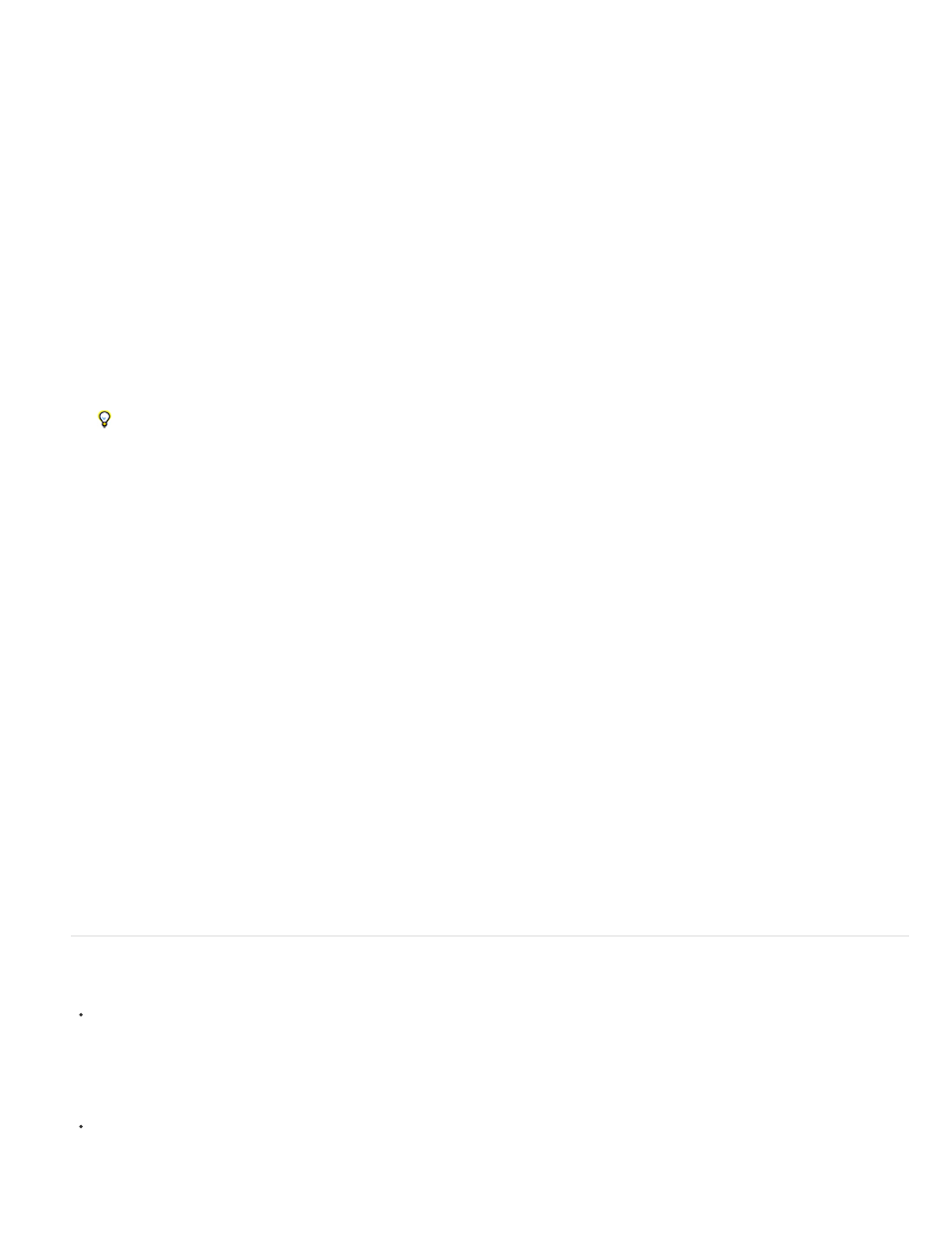Tips for working with the roto brush tool – Adobe After Effects User Manual
Page 396

Note:
4. Drag in the Layer panel to draw a foreground stroke on the object that you want to define as a foreground object. When you are drawing a
foreground stroke, the Roto Brush tool’s pointer is a green circle with a plus sign in the middle.
Draw the stroke down the center of the object, not along the edge. (See
Tips for working with the Roto Brush tool
The magenta outline that appears around the foreground object in Alpha Boundary view mode is the segmentation boundary, the rough line
that separates the foreground from the background. You can also view the segmentation using other view modes. (See
5. Alt+drag (Windows) or Option+drag (Mac OS) to draw a background stroke on the area that you want to define as the background. When
you are drawing a background stroke, the Roto Brush tool’s pointer is a red circle with a minus sign in the middle.
6. Repeat the steps of drawing foreground and background strokes on the base frame until the segmentation is as precise and complete as
possible. You should make the segmentation on the base frame as good as possible; the segmentation of other frames is based on the
segmentation defined on the base frame.
Try for a segmentation boundary that is within a couple of pixels of your desired edge. You can modify properties in the Roto Brush effect,
such as Smooth, to refine the initial segmentation further. (See
Roto Brush effect and Refine Matte effect reference
.)
You can resize the Roto Brush tool’s tip to make finer strokes. Broad strokes are best for initial work, but fine strokes are useful for
details. (See
Roto Brush strokes, spans, and base frames
.)
7. Press Page Down to move forward one frame.
After Effects uses motion tracking, optical flow, and various other techniques to propagate the information from the base frame to the current
frame to determine where to draw the segmentation boundary.
8. If the segmentation boundary that After Effects calculates for the current frame is not where you want it to be, then you can make corrective
strokes to teach After Effects what is foreground and what is background. Draw foreground strokes and background strokes as needed to
correct the segmentation. Corrective strokes propagate in one direction, away from the base frame.
note: You can also modify properties in the Propagation property group to affect how After Effects propagates the segmentation information
from previous frames to the current frame. (See
Roto Brush effect and Refine Matte effect reference
.)
9. Repeat the steps of moving one frame at a time and making corrective strokes until you have created a segmentation boundary for the
entire duration that you want to segment.
10. Select the Refine Matte option in the Roto Brush effect properties in the Effect Controls panel and modify properties in the Matte property
Roto Brush effect and Refine Matte effect reference
.)
11. When you are done, click the Freeze button in the lower-tight corner of the Layer panel to cache, lock, and save the Roto Brush
segmentation information. (See
Freezing (caching, locking, and saving) Roto Brush segmentation
Tips for working with the Roto Brush tool
When drawing strokes to define a foreground object with the Roto Brush tool, begin by drawing strokes along the center of the object’s
features. For example, draw a stroke along the skeleton rather than along the outline of an arm. Unlike conventional rotoscoping, which
requires precise manual definition of boundaries, using the Roto Brush tool works by defining representative regions. After Effects can then
extrapolate from those regions to determine where the boundaries are. Before you draw a stroke along a boundary to attempt to get a
precise segmentation, be sure that you've drawn foreground strokes down the center of the object and made at least some rough
background strokes on the other side of the boundary.
If you draw a Roto Brush stroke over the wrong area of the image, undo that stroke. (See Undo changes.) However, if After Effects
misinterprets your stroke and includes or excludes too much of the image, don’t undo; further teach Roto Brush by drawing additional strokes
to include or exclude regions.
392
